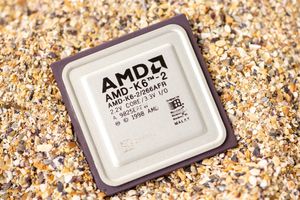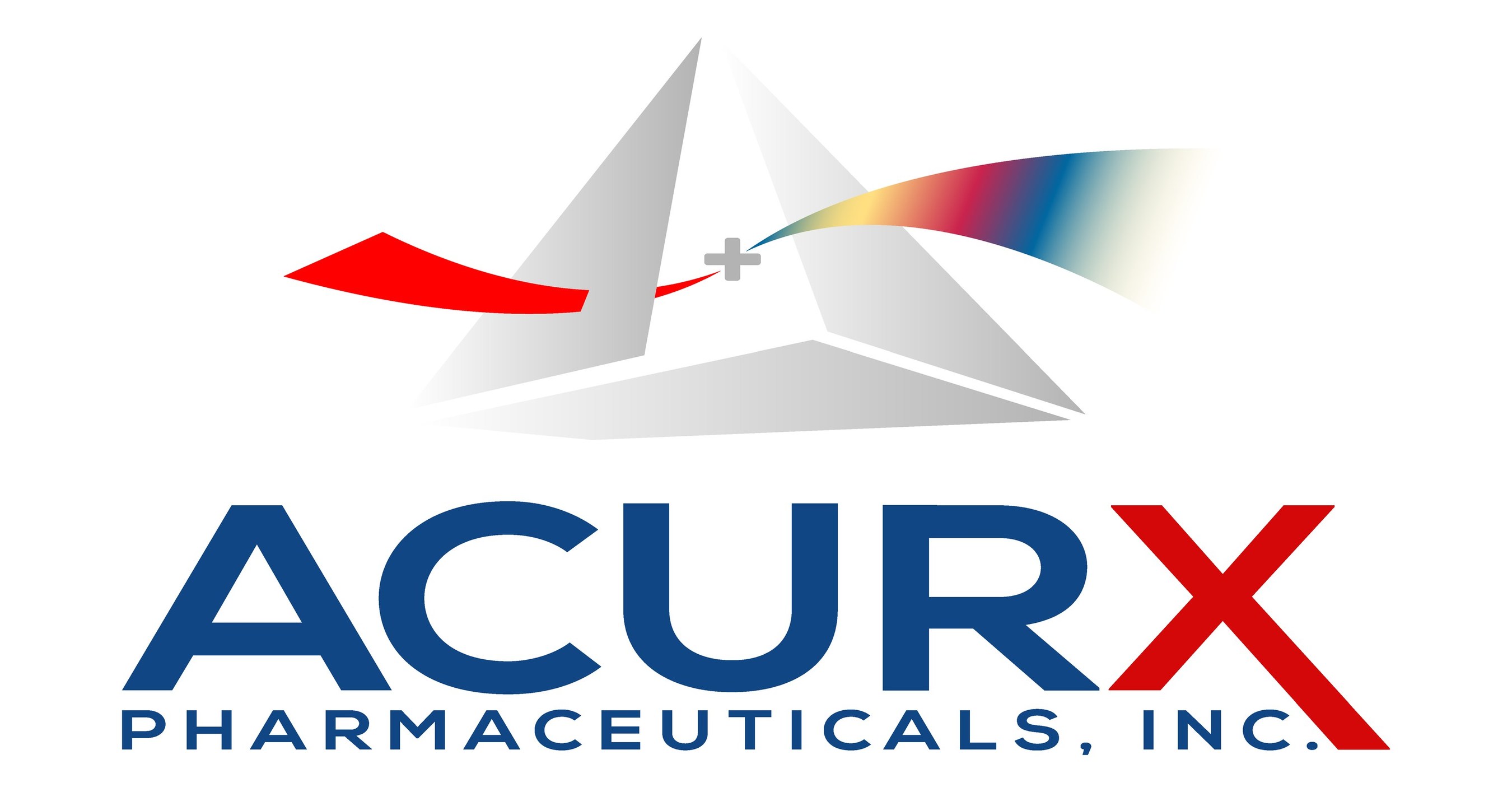Financial News
Acurx Pharmaceuticals Surges 29% In August, Here’s Why The ACXP Bulls Expect Much More To Come ($ACXP)
Acurx Pharmaceuticals (NASDAQ: ACXP) stock has broken through a consolidation phase at the $3.57 level, surging by more than 29% in August. Exchanging hands at roughly $4.60 on Tuesday, the bullish momentum could put all-time highs of $5.92 made during 2021 back in the near-term crosshairs. A recent spike in volume, riding a wave of excellent interim Phase 2 trial data, possible grant awards, and potential partnerships could make that happen sooner than later.
That's not an overzealous presumption. ACXP is emerging as the odds-on favorite to get an effective C. difficile (CDI) drug to market. In fact, its Phase 2b ibezapolstat candidate demonstrates things others can't. And that's attracting a lot of attention, not only from investors following this under-the-radar company but likely from big pharma companies who may want a piece of ACXP's expected success in commercializing a drug to treat patients in a more than $1.6 billion CDI treatment market.
Here's the exciting part of the ACXP investment proposition: investors taking advantage of current prices may be early to the game despite the near 30% jump. That's because government and sponsored grant funding could provide a cash war chest for ACXP to take its ibezapolstat to the finish line without partnership interest. If so, several companies that missed primary endpoints in their C. difficile studies could be left on the outside looking in. And investors know that big pharma rarely likes to give up billion-dollar market opportunities. Nor do they want to admit defeat.
Therefore, with a market cap of just $46 million today, ACXP could present a bargain for investors and potential partners too compelling to ignore. After all, for a big pharma player, paying 5X ACXP's market cap to get interested would be a rounding error in its financials. For investors, however, that could produce a windfall.
The better news...there are reasons for each to act sooner than later.
An Unpolished Biotech Gem
The opportunity for grant money has been noted. But the more significant attraction to ACXP from an investor's perspective is that the company may be the last drug company standing in the race to get an effective C. difficile drug treatment to market. Remember that ACXP isn't in the race to treat symptoms; it could have a cure. That difference is an advantage, a critical one, that other companies have failed to achieve. And there have been plenty of failures.
Over the past decade, disappointing clinical results in treating CDI have led several big pharma companies to drop off the clinical radar. Those still pursuing its CDI treatment candidate may be doing so with hopes of potentially treating, at best, niche indications of the infection. The latest disappointing data came from Pfizer (NYSE: PFE), which missed meeting its primary endpoints in its Phase 3 CLOVER trial to treat C. difficile. But they aren't the only ones licking their wounds.
Sanofi (NYSE: SNY) missed its endpoints in 2017, and more recently, Summit Therapeutics (NYSE: SMMT) published topline results that were far from impressive. In fact, that miss resulted in them trying to change the primary endpoints in its Phase 3 trial, something the FDA didn't accommodate. Those three weren't the only ones disappointed to date.
Another pharmaceutical company, Finch Therapeutics (NASDAQ: FNCH), saw a setback when it received a clinical hold letter from the FDA about concerns over its SARS-CoV-2 donor screening protocols. While Finch announced that the FDA hold was lifted and enrollment would resume in 2H 2022, they still lost considerable clinical momentum.
It's appropriate to note that FNCH's Phase 2 data was impressive compared to Pfizer, Sanofi, and Summit. It showed that 80.3% of trial participants receiving a single administration of its candidate following standard-of-care antibiotics achieved sustained clinical cure through eight weeks. Promising, yes.
Better than ACXP? Not likely.
ACXP's Ibezapolstat Shows 100% Success
Acurx's ibezapolstat candidate published Phase 2a data showing it to be significantly better. Compared to Finch's candidate, which focuses on the microbiome as a single dimension and has only demonstrated a reduction in recurrent infection, the most significant advantage and point of superiority of ibezapolstat are that it's a dual impact drug that addresses the direct infection and, to date, avoids recurrent infection altogether. Better still, it restores the microbiome, a critical consideration.
The comparison to Finch's drug is appropriate because they may be the furthest along from a potential competitive perspective. Thus, the differences between the two candidates are timely. They also endorse a persuasive and data-justified argument that ACXP's candidate is seemingly better than Finch's one-dimension drug in cases of multiple recurrent infections. If that's the case, which current data suggests, ACXP's candidate could be the most ideally positioned treatment candidate to earn preferred first-line treatment designation.
Other than Finchs', no other candidate looks close to emerging as a serious competitive threat to ACXP's ibezapolstat's targeted front-line position. That's why others may need to pay to play; if they don't, they may find competing exceptionally hard.
So, who may want to partner with ACXP? Well, many might want to, but Pfizer (NYSE: PFE) may be the company to win ACXP's clinical trial heart.
Pfizer Would Be An Excellent Partner
Actually, blogs are already speculating that Pfizer could be the first to call. And for good reasons. During its CLOVER trial update commentary, which missed primary endpoints, investors zeroed in on Pfizer expressing their interest in staying committed to pursuing the over one billion dollar market opportunity. But interest and ability are two different clinical beings, and in the drug industry, only the latter matters.
And don't think PFE is blinded by unwarranted optimism about its CLOVER trial data. They are well aware its candidate failed to meet endpoints. It's also fair to suggest that they realize that if its candidate gets approved, it would likely be relegated to treating fringe and niche CDI treatment indications.
Therefore, while no investor should put it past PFE to spend up to hundreds of millions of dollars more to advance and commercialize an unpromising drug, more savvy ones are considering PFE's best course of action may be to partner and potentially capture a significant portion of the entire billion-dollar market opportunity with a drug showing the unique ability to cure the disease.
From ACXP's perspective, they could be in a win-win scenario. Yes, grant funding can eliminate many obstacles. But partnerships can too. And while having partners can dilute earnings after marketing approval, they add immediate value, potentially eliminate all ongoing trial costs, and add a level of experience in getting drugs approved. For ACXP investors, the trade-off would probably be well worth the interest given. However, it may not be as much as many think.
With best-in-class data in hand, ACXP could bargain from a position of strength. Remember, its data supports the potential for ibezapolstat to become the front-line therapy to treat over 500,000 patients who get CDI yearly. Of those 500,000, more than 20,000 patients per year die. So, while using the term infection, don't underestimate its potential 4% outcome. CDI can be fatal. For ACXP, it can mean a significant appreciation for what it has, and it's stock.
ACXP Puts A Cure For CDI In Sight
Okay, so why might ACXP's phone ring from those wanting to partner? Foremost, ACXP's Phase2a data showed 100% cure after 10 days of treatment, and 100% sustained cure after a 30-day follow-up. Thus, the totality of data, even noting Finch's one-dimensional eight-week sustained cure, shows ACXP's Phase 2a data to date constitutes the best clinical data seen in the CDI space.
It also demonstrated restoration of the patient's microbiome during treatment, which is highly unusual for an antibiotic. Considering that, it's reasonable to consider ibezapolstat as a potential "dual impact" therapy because it restores the microbiome while tending to the acute infection. That's not all attracting attention.
Its Ph2a trial was so impressive that it led the Trial Oversight Committee and the Scientific Advisory Board to allow for early termination of its Phase 2a trial and advance straight into a Phase 2b study. That allowance was made after data on just ten patients showed a 100% cure rate and 100% sustained cure after follow-up. In other words, those oversight boards probably liked what they saw.
The FDA may as well. They have already granted ACXP a Qualified Infectious Disease Product (QIDP) and a fast-track designation for its ibezapolstat treatment candidate. Perhaps it's fair to infer that they would be welcome to approve a drug that does exceedingly better than the current standard of care, Vancomycin, which has a recurrent infection rate of up to 40% with little evidence showing its value as an effective long-term treatment.
A Validated CDI Treatment Market
Once approved, ibezapolstat would likely meet overwhelming demand. A 2017 update of the Clinical Practice Guidelines for C. difficile infection by the Infectious Diseases Society of America (IDSA) and Society or Healthcare Epidemiology of America (SHEA) indicates that C. difficile infection presents a significant problem to those in healthcare settings and among the general population. The disease is so prevalent in hospitals and long-term care facilities that the New England Journal of Medicine called C. difficile one of the most common causes of health-care-associated infections in hospitals.
Acurx looks best positioned to meet the challenge. Data published from ACXP's Phase 2a trial in Clinical Infectious Diseases, one of the most respected journals in the medical community, indicates that ibezapolstat could be deserving of the front-line treatment crown. According to the article, ibezapolstat showed ideal traits as an oral antibiotics candidate, demonstrating a highly potent response against C. difficile, good tolerability, and limited gastrointestinal absorption. That resulted in very high fecal concentrations, which may reach three orders of magnitude above the MIC for C. difficile.
The article further noted that in addition to the ibezapolstat treatment being highly effective at killing C. difficile, it appears to do so while maintaining the populations of helpful bacteria in the gut microbiome. These signs indicate that the treatment may do more than cure CDI in the short term; it can significantly reduce the likelihood of recurrent infection.
Suitors May Call Sooner Than Later
What's it all mean? Put simply, there are reasons justifying ACXP's recent stock price surge. Still, at $4.60, the run is likely far from over. And paying attention to the adage that volume precedes price, something could, and likely is, happening behind the scenes.
Remember, ACXP is an under-the-radar, thinly traded stock. So, its sharp move higher is indeed worthy of attention. And not just by investors looking for an undervalued investment opportunity but by potential partners that may need to make their interest known to save potentially tens of millions in its cost to partner.
Know this too. Big pharma certainly does. Valuations of a Phase 3 drug company compared to a Phase 2 can amount to hundreds of millions in difference. Thus, under-estimating the speed at which ACXP can make that leap could be exponentially costly to potential suitors. More than likely, savvy ones aren't.
Hence, while ACXP stock is indeed in play, expect the game to get more intense, market-cap valuations to rise, and interest in ACXP to swell as its hoped-for first-line treatment candidate gets closer to commercialization. After all, having something others want can be a significant value driver. But more so in the pharmaceutical sector, where an asset worth potentially billions in new revenues can be transformative financially to the company owning it. For ACXP, that's the proposition they may offer.
And best of all, the ground floor opportunity, at least from an investor's perspective, is still there for the taking.
Disclaimers: Hawk Point Media, LLC. (HPM, LLC.) is responsible for the production and distribution of this content. HPM, LLC. is not operated by a licensed broker, a dealer, or a registered investment adviser. It should be expressly understood that under no circumstances does any information published herein represent a recommendation to buy or sell a security. Our reports/releases are a commercial advertisement and are for general information purposes ONLY. We are engaged in the business of marketing and advertising companies for monetary compensation. Never invest in any stock featured on our site or emails unless you can afford to lose your entire investment. The information made available by HPM, LLC. is not intended to be, nor does it constitute, investment advice or recommendations. The contributors may buy and sell securities before and after any particular article, report and publication. In no event shall HPM, LLC. be liable to any member, guest or third party for any damages of any kind arising out of the use of any content or other material published or made available by HPM, LLC., including, without limitation, any investment losses, lost profits, lost opportunity, special, incidental, indirect, consequential or punitive damages. Past performance is a poor indicator of future performance. The information in this video, article, and in its related newsletters, is not intended to be, nor does it constitute, investment advice or recommendations. HPM, LLC. strongly urges you conduct a complete and independent investigation of the respective companies and consideration of all pertinent risks. Readers are advised to review SEC periodic reports: Forms 10-Q, 10K, Form 8-K, insider reports, Forms 3, 4, 5 Schedule 13D. For some content, HPM, LLC., its authors, contributors, or its agents, may be compensated for preparing research, video graphics, and editorial content. HPM, LLC has been compensated up to five-thousand-dollars cash via wire transfer by a third party to produce and syndicate content for Acurx Pharmaceuticals, Inc. for a period of one month. As part of that content, readers, subscribers, and website viewers, are expected to read the full disclaimers and financial disclosures statement that can be found on our website.
The Private Securities Litigation Reform Act of 1995 provides investors a safe harbor in regard to forward-looking statements. Any statements that express or involve discussions with respect to predictions, expectations, beliefs, plans, projections, objectives, goals, assumptions or future events or performance are not statements of historical fact may be forward looking statements. Forward looking statements are based on expectations, estimates, and projections at the time the statements are made that involve a number of risks and uncertainties which could cause actual results or events to differ materially from those presently anticipated. Forward looking statements in this action may be identified through use of words such as projects, foresee, expects, will, anticipates, estimates, believes, understands, or that by statements indicating certain actions & quote; may, could, or might occur. Understand there is no guarantee past performance will be indicative of future results. Investing in micro-cap and growth securities is highly speculative and carries an extremely high degree of risk. It is possible that an investors investment may be lost or impaired due to the speculative nature of the companies profiled.
Media Contact
Company Name: Hawk Point Media
Contact Person: Ken Kellis
Email: info@hawkpointmedia.com
Phone: 3057806988
City: Miami Beach
State: Florida
Country: United States
Website: https://www.acurxpharma.com
More News
View More





Quotes delayed at least 20 minutes.
By accessing this page, you agree to the following
Privacy Policy and Terms Of Service.




